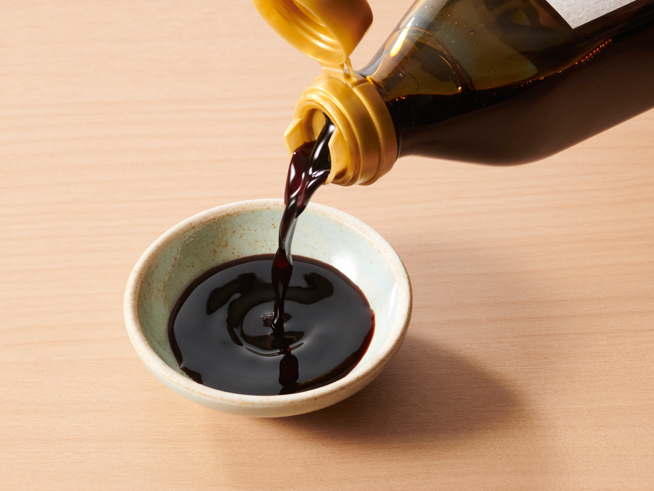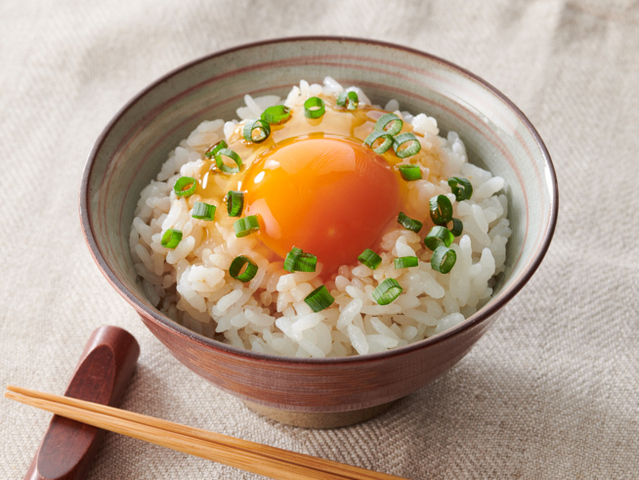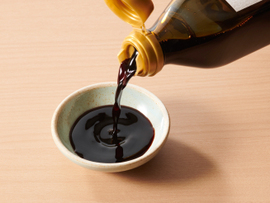
Ono Soy Sauce

IshikawaOno Soy Sauce
Classification (Large)
Agricultural products
Classification (Small)
Soy sauce, miso, other seasonings
Main ingredients used
soybeans, wheat flour, salt, deep ocean water, fermentation starter, amino acid solution
When using downloaded images, please read the "Terms of Use" and clearly state that the source of the image is "Traditional Foods in Japan" by the Ministry of Agriculture, Forestry and Fisheries.
If the photo credits is stated, please include it as well.
Example of description
of the photo credits
Example of description when the photo credits is not stated
Source: "Traditional Foods in Japan" Ministry of Agriculture, Forestry and Fisheries
Example of description when the photo credits is stated
Source: "Traditional Foods in Japan" Ministry of Agriculture, Forestry and Fisheries
Photo credits:xxx
Region of inheritance
Kanazawa City
Product overview (special characteristics and types)
Ono soy sauce is an umakuchi soy sauce essential to Kaga cuisine. It is known for its moderate sweetness and mellowness. The color of Ono soy sauce is slightly lighter than other dark soy sauces, and plays a role in enhancing the taste of the ingredients while adding a rich flavor. It is used for dishes such as simmered fish or vegetables, ramen, and sashimi.
History and culture
This soy sauce originated in the Genna period (1615 to 1624), when a townsperson from Ono named Ihei Naoeya studied and spread the soy sauce manufacturing method of Kishu Yuaza, under the order of the third lord of the Kaga Clan, Maeda Toshitsune. The soy sauce developed to become one of the specialties of the Kaga Domain due to the castle town of Kanazawa being one of the largest cities in Japan and Ono Port being one of the key harbors along the Sea of Japan’s coast for cargo ships during that time, which provided good transportation routes and easy access to raw ingredients, such as barley, soybeans, and Noto salt. The area was also blessed with abundant underflow water from Mt. Hakusan and a humid climate, and support was provided from the Kaga Domain. It is said that, later on, the Maeda clan used the alternate residence duty system to promote Ono soy sauce throughout Japan. At its peak, there were more than 60 soy sauce manufacturers, and the area was considered one of the five major soy sauce production regions, along with Noda, Choshi, Tatsuno, and Shodoshima Island. Thus, Ono soy sauce was nurtured along with the food culture of the fief of Kaga, which yielded one million koku of rice annually (one koku was the amount needed to feed one person for a year).
Production method
To start, koji mold, which has been handed down for generations, is used to create a fermentation starter. Next, roasted and crushed wheat is mixed with steamed soybeans, to which the fermentation starter is added. The mixture is placed in a koji room for approximately 43 hours to create koji malt. Chilled salt is added to this koji and set to rest for approximately six months to ferment and mature. Adding salt water to koji at this stage creates what is called moromi. Using high-quality water and salt is said to further enhance the umami. As it is important to create an environment conducive to the activity of microorganisms, strict temperature control is essential to the fermentation process. Matured moromi is carefully and slowly squeezed to produce raw soy sauce, and the soy sauce is filtered thoroughly during its resting period. To finish, heat is applied and the intensity adjusted to create the optimal color, flavor, and fragrance.
Conservation and succession efforts
The original soy sauce manufacturer in Ono, Kanazawa City offers free guided tours and areas to enjoy hands-on experiences in their efforts to spread fermented food culture throughout the world. Some other soy sauce brewers continue traditional manufacturing methods from the Edo period, such as using wooden vats for brewing.
Main consumption method
This soy sauce pairs well with fresh seafood caught in the Sea of Japan (East Sea), and is often used for sashimi, simmered fish, and pickling by soy sauce. It is treasured as an unsung hero in various dishes, including Kaga cuisine, which combines blessings of the sea and mountains, chilled tofu, simmered dishes, and steamed egg custard.
At-home recipes:Tamago kake gohan (rice mixed with raw egg) using Ono soy sauce

Ingredients
Ono soy sauce
1 teaspoon
Cooked rice
360 g
Egg
2 eggs
Thin green spring onion shoots (cut into small pieces)
As needed
How to make
Put cooked rice in a bowl, place a raw egg in the middle of the rice, and sprinkle thin green spring onion shoots and Ono soy sauce.

